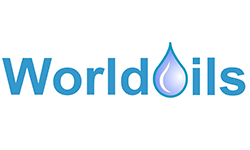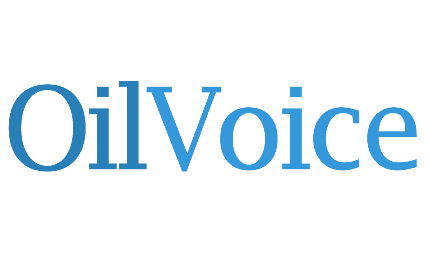Well Completion and Workover (WCW)
This 5-day course will cover successful well completion and workover practices. It is a practical oriented course designed to bridge the knowledge gap in the area well completion and workover designs and operations.
Well completion is considered to be one of the most critical practices for reservoir exploitation and management. During this process, the responsible personnel is tasked to optimally design and install a system that can deliver its full potential to optimize oil gas and production, without compromising safety and reliability.
During the field life cycle, some reservoirs undergo some physical and chemical changes. This leads to loss of revenue as the wells are no longer operating at their optimal conditions. Hence, a workover/well intervention may be required to safely and efficiently restore the wells back to production. This presents a lot of challenges due to the different reservoir fluids, various operating conditions, and different operating environments.
The course possesses the following futures:
- It is the first of its kind in the industry.
- It is loaded with practical examples, case studies, and industrial applications taken from:
- Different operating environment (land, swamp, and offshore including deep-water)
- Different well conditions: High-Pressure High-Temperature, sour gas, and sweet gas, etc.
- Tropical and arctic (temperate) climates
- It provides practical exercises, and delegates will be followed up to ensure they can handle all the calculations, without difficulties.
- Focuses on different technological innovations to optimize reservoir drilling and completion practices, to improve well productivity.
- Sustainable and responsible oil and gas field development and production amid energy transition.
- It could be designed to meet the need of the clients on specific topics of interest.
- Team learning. A group completion design project accomplishes the course. All the elements of the course will help you and your team to handle the project challenge.
- Towards the end of the course, the groups formed in the class will present their completion design project for discussions/reviews.
- Delegates are allowed to come with their projects of interest, which they could substitute for the class field project design work but must be presented for discussions/reviews
Day 1
- Introduction
- Introduction of individual, professional background, etc.
- Aim / Objective of the course
- Individual expectation from the course
- Safety Alert
- Starter Quiz & Review
- Introduction to Completion design
- Definition of Well completion
- Oil and gas project life cycle
- Types of well completion
- Completion planning
- Work flow for successful well completion & workover
- Integrated approach to well completion
- Definition of Well completion
- Oil and gas project life cycle
- Types of well completion
- Completion planning
- Work flow for successful well completion & workover
- Integrated approach to well completion
- Concept of Darcy’s Law & SKIN
- Reservoir Completion:
- Well Perfomance
- Perforations
- Well Stimulation
- Stimulation of Sandstone reservoir
- Stimulation of Carbonate reservoir
- Introduction to completion design project
- Well Perfomance
- Perforations
- Well Stimulation
- Stimulation of Sandstone reservoir
- Stimulation of Carbonate reservoir
Day 2
- Reservoir Completion: Hydraulic Fracturing
- Class exercise: The objectives of the class exercise on hydraulic fracturing are as follows:
- Calculations on Fold of Increase (FOI) as a screening tool to select wells for hydraulic fracturing candidate
- Calculations to compare acid frac versus propped frac in a carbonate reservoir
- Sand control stimulation techniques:
- Causes of sand production
- Sand control design concepts
- Class exercise: The objectives of the class exercise on sand control are as follows:
- Perforation gun selection
- Perforation cleaning
- Sand control design selection
- Gravel size selection
- Screen size selection
- Tubing Performance
- Artificial Lift Methods
- Production Chemistry
- Problem Identification
- Class exercise: The objectives of the class exercise on well problem identification are as follows:
- Calculations on the effect of formation damage on well production
- Calculations on flow efficiency
- Use of production history to assess formation damage
- Stimulation well candidate selection
- Group work: Completion design project
- Calculations on Fold of Increase (FOI) as a screening tool to select wells for hydraulic fracturing candidate
- Calculations to compare acid frac versus propped frac in a carbonate reservoir
- Causes of sand production
- Sand control design concepts
- Perforation gun selection
- Perforation cleaning
- Sand control design selection
- Gravel size selection
- Screen size selection
- Calculations on the effect of formation damage on well production
- Calculations on flow efficiency
- Use of production history to assess formation damage
- Stimulation well candidate selection
Day 3
- Tubing Stress Analysis
- Purpose of Stress Analysis
- Stress Loads: stress/strain, acial loads, burst/collapse and tri-axial analysis
- Load Cases
- Completion Equipment and Connections
- Class exercise: The objectives of the class exercise on tubing stress analysis are as follows
- Basic TSA calculations including weight in air, buoyancy force, axial force due to bending, safety factors, collapse loads, tensile yield pressure, etc
- Tubing movements and tension calculations during well stimulation
- Materials Selection:
- Metallurgy
- Corrosion tiangle
- Types of corrosion:
- Sour corrosion (stress corrosion cracking, sulphide stress cracking, etc)
- Sweet corrosion
- Ggalvanic corrosion
- Erosion-corrosion, etc
- Corrosion prevention methods
- Elastomers and Plastics
- Protective Coatings
- Material Selections for all types of wells: sour, sweet, HPHT wells, etc
- NACE/ISO on material selection
- Completion components
- OCTG selections
- Completion components and selections: Christmas tree, tubing hangers, downhole safety valve, packers, expansion devices, nipples, downhole gauges, etc
- Group work: Completion design project
- Basic TSA calculations including weight in air, buoyancy force, axial force due to bending, safety factors, collapse loads, tensile yield pressure, etc
- Tubing movements and tension calculations during well stimulation
- Metallurgy
- Corrosion tiangle
- Types of corrosion:
- Sour corrosion (stress corrosion cracking, sulphide stress cracking, etc)
- Sweet corrosion
- Ggalvanic corrosion
- Erosion-corrosion, etc
- OCTG selections
- Completion components and selections: Christmas tree, tubing hangers, downhole safety valve, packers, expansion devices, nipples, downhole gauges, etc
Day 4
- Completion operation base preparation
- Equipment purchasing, manufacturing and factory acceptance
- Service contracts
- Equipment preparation
- Technical program
- Rig preparation and completion installation process
- Operation planning
- Equipment shipping / transportation
- Equipment reception
- Pre-job meeting
- Casing cleaning operation
- Running in hole the completion equipment
- Well clean-up
- Reporting
- After-action review
- Emerging Techniques
- Fiber optics: Distributed Temperature System (DTS),
- Pressure / temperature (P/T), etc
- Intervention-less packers (Hydrostatic packers, swelling packers, etc)
- In-situ self generating weak acid
- Expandable tubulars
- Expandable Sand Screens (ESS)
- Sand Control in High angle and long interval : Alternate path technology (SHUTS, CAPS, etc)
- Formation Isolation Valves (FIV)
- Intelligent & Smart Well
- Completion : Interval Control Valves (ICV)
- Underbalanced Drilling & Completion
- Multistage Fracturing
- Group work: Well Completion Design
- Equipment purchasing, manufacturing and factory acceptance
- Service contracts
- Equipment preparation
- Technical program
- Operation planning
- Equipment shipping / transportation
- Equipment reception
- Pre-job meeting
- Casing cleaning operation
- Running in hole the completion equipment
- Well clean-up
- Reporting
- After-action review
- Fiber optics: Distributed Temperature System (DTS),
- Pressure / temperature (P/T), etc
- Intervention-less packers (Hydrostatic packers, swelling packers, etc)
- In-situ self generating weak acid
- Expandable tubulars
- Expandable Sand Screens (ESS)
- Sand Control in High angle and long interval : Alternate path technology (SHUTS, CAPS, etc)
- Formation Isolation Valves (FIV)
- Intelligent & Smart Well
- Completion : Interval Control Valves (ICV)
- Underbalanced Drilling & Completion
- Multistage Fracturing
Day 5
- Well Control
- Well control Equipment :
- Blowout preventer system requirements
- Choke Manifold
- Circulating System
- Kicks and its causes
- Well Killing Operations:
- Forward circulation
- Reverse circulation
- Bullheading
- Lubricate and Bleed
- Class exercise on well control
- Workover Operations:
- Workover definition and descriptions
- Workover Types
- Safety Workover (SWO)
- Long Term suspensions (LTS)
- Plug and Abandonment (P & A)
- Production Enhancement (PE)
- Workover Feasibility Studies
- Well control Equipment :
- Blowout preventer system requirements
- Choke Manifold
- Circulating System
- Kicks and its causes
- Well Killing Operations:
- Forward circulation
- Reverse circulation
- Bullheading
- Lubricate and Bleed
- Workover definition and descriptions
- Workover Types
- Safety Workover (SWO)
- Long Term suspensions (LTS)
- Plug and Abandonment (P & A)
- Production Enhancement (PE)
- Workover Feasibility Studies
- Group presentation / General Review of the Well Completion Design Project
- Wrap up
What is Well Completion and Workover training course objective?
The course is designed to focus on practical applications regarding:
1. Identify and understand the parameters that influence the selection and design of completion components.2. Integrate the importance of completion process to future production.
3. Deliver techniques to select the best tubing size and best materials for well completion.
4. Gain practical methods to design, plan and install safe and efficient well completion and workover.
5. Manage well environments with extreme reservoir conditions (pressure, temperature, etc.)
6. Bridge the importance of well design in relation to the ability to carry out well intervention.
7. Explore new technological developments in well completions and workovers.
8. Plan an appropriate intervention and workover strategy to maintain or increase the field production.
9. Gain how to navigate sustainable and responsible oil and gas field development and production amid energy transition.
Who should join Well Completion & Workover training course by PetroSync?
The course is designed for, but not limited to:
- Completion Engineer /Supervisors /Superintendent
- Completions Team Led /Manager
- Well Services /Intervention Engineer /Supervisors
- Workover Engineer /Supervisors
- Petroleum Engineer
- Reservoir Engineer
- Drilling Engineer/Superintendent /Site Manager
- Oil and Gas industry Drilling/Completion/Intervention Service providers
Michael Etuhoko, P.Eng., PMP
Michael (Mike) Etuhoko is a well known consultant and founder of Protekz Inc. Canada, an independent well and production engineering consultancy company. He has over 22 years of experience in the Oil & Gas industry. He has led major projects & trainings for major companies in Europe, North America, Africa, Central Asia, and Far East Asia. Mike currently consults worldwide in the area of Well Completion, Workover and Well Services, Sand Control, and Formation Damage Prevention and Treatments. Before working as a consultant, he has served several years in Shell and Total E&P , which has equipped him with a solid foundation in well completion and workover practices.
His Current and Recent Assignments Include the Following:
- Lead Completions & Intervention for Karachaganak Field, Kazakhstan
Completion & Intervention for Field with Characteristics: Deep wells (± 6200m TVD on the average), light oil/condensate and gas, High GOR, H2S > 7%, CO2 > 6%, low porosity, low permeability and HPHT reservoir environment
- Subsea Intervention/Workover/Completion for Korean National Oil Company
Diagnose and restore Donghae 1-4P Sub-sea well back to production
- Completions, Sand Control, & Well Testing (Deepwater Explroation Asset) for BG Nigeria
Responsible for “Well Completion and Testing” operations in deepwater exploration campaign
- Well Productivity for Total E&P
Scales Squeeze treatment for Dunbar, Alwyn, Otter and Elgin/Franklin fields; Fracturing design and operations in HPHT wells; Sand Control in HPHT wells, Water shut-off in HPHT wells
Mike has presented for several international conferences including Offshore Technology Conference, SPE Asia Pacific Oil & Gas Conference, and SPE Annual Technical Conference Exhibition. He has also authored SPE papers on “Monobore Completion Using Interventionless Technology” and “Open Hole Multistage Fracturing Completion in Carbonate Reservoir.”
Upcoming Training
- Code PST0192-202601
- Start Date 29 Jun, 2026
- End Date 03 Jul, 2026
- Locations Kuala Lumpur, Malaysia
- Cost USD 4350
- Code PST0192-202602
- Start Date 06 Jul, 2026
- End Date 10 Jul, 2026
- Locations Yogyakarta, Indonesia
- Cost USD 4350
- Code PST0192-202603
- Start Date 28 Sep, 2026
- End Date 02 Oct, 2026
- Locations Bangkok, Thailand
- Cost USD 4350
Upcoming Training
| Code | Start Date | End Date | Locations | Cost | Instructor |
|---|---|---|---|---|---|
| PST0192-202601 | 29 Jun, 2026 | 03 Jul, 2026 | Kuala Lumpur, Malaysia | USD 4350 | Michael Etuhoko, P.Eng., PMP |
| PST0192-202602 | 06 Jul, 2026 | 10 Jul, 2026 | Yogyakarta, Indonesia | USD 4350 | Michael Etuhoko, P.Eng., PMP |
| PST0192-202603 | 28 Sep, 2026 | 02 Oct, 2026 | Bangkok, Thailand | USD 4350 | Guy Allinson |
| PST0192-202604 | 16 Nov, 2026 | 20 Nov, 2026 | Kuala Lumpur, Malaysia | USD 4350 | Guy Allinson |
| PST0192-202605 | 23 Nov, 2026 | 27 Nov, 2026 | Bali, Indonesia | USD 4550 | Guy Allinson |
| PST0192-202605 | 23 Nov, 2026 | 27 Nov, 2026 | Bali, Indonesia | USD 4550 | Guy Allinson |
Past Training
| Code | Start Date | End Date | Locations | Cost | Instructor |
|---|---|---|---|---|---|
| PST0192-201401 | 25 Aug, 2014 | 29 Aug, 2014 | Kuala Lumpur, Malaysia | SGD 5995 | Michael Etuhoko, P.Eng., PMP |
| PST0192-201501 | 01 Jun, 2015 | 05 Jun, 2015 | Bali, Indonesia | SGD 5995 | Michael Etuhoko, P.Eng., PMP |
| PST0192-202401 | 24 Jun, 2024 | 28 Jun, 2024 | Kuala Lumpur, Malaysia | USD 4250 | Michael Etuhoko, P.Eng., PMP |
| PST0192-202402 | 09 Dec, 2024 | 13 Dec, 2024 | Bali, Indonesia | USD 4450 | Michael Etuhoko, P.Eng., PMP |
| PST0192-202501 | 08 Dec, 2025 | 12 Dec, 2025 | Kuala Lumpur, Malaysia | USD 4250 | Michael Etuhoko, P.Eng., PMP |




